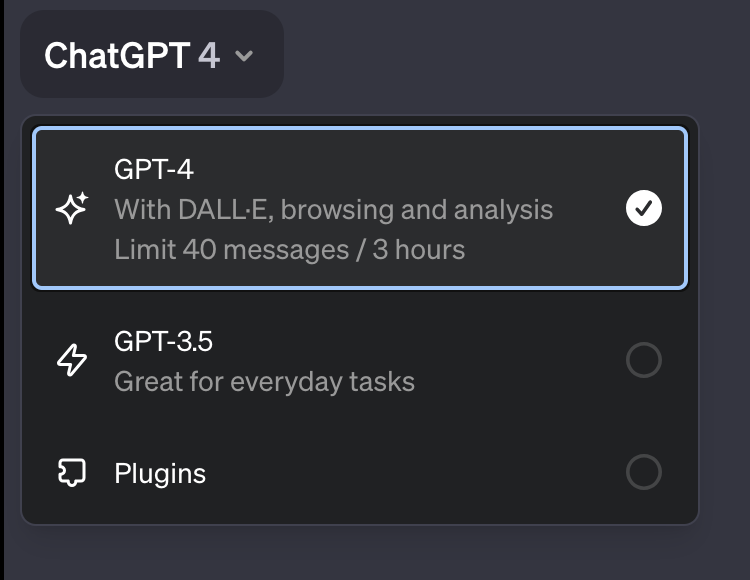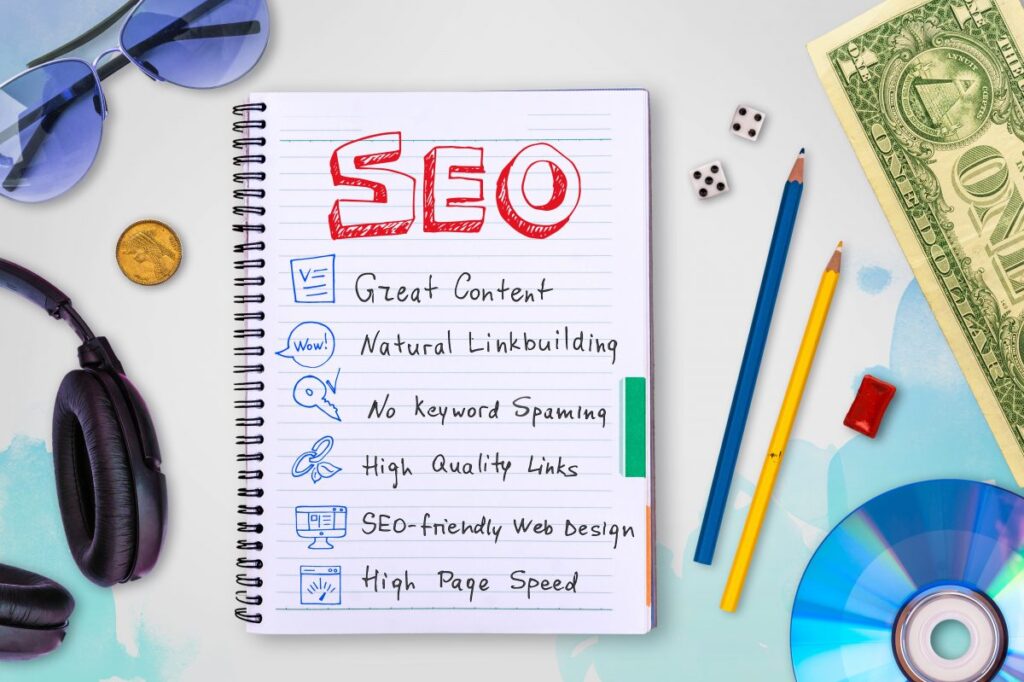Since its debut on November 30th, 2022, people worldwide have found innovative ways to use ChatGPT to solve problems and become more productive.
Marketers, creators, and entrepreneurs are eagerly attempting to find real-world use cases for this tool to gain a real competitive advantage in the marketplace.
The problem is that most people are using it wrong.
Most people treat ChatGPT as a glorified Google search or as a human who is thorough but robotic. So they treat it as such. The result is often a generic wall of text that isn’t quite what you need, requiring further back and forth to eventually arrive at something useful. Many simply give up and go back to the old way of doing things.
The good news is that there is a better way.
This article will break down the six strategies you need to know, provide specific tactics you can apply to all your prompts, and include specific real-world examples you can use to get started.
Skip ahead to explore the six strategies to prompt like a pro
For marketers, learning to craft high-quality prompts unlocks an edge that can help you drive outsize results. ChatGPT can be an ROI multiplier if used correctly, especially for your time.
The key to high-quality prompts is to simply apply the six strategies outlined by OpenAI in their latest prompt engineering guide. Yes, this means you will spend more time structuring prompts than before, but the outcome will be exponentially better and will save you time in the long run.
And remember, you can apply these principles when you use Bard, Claude, or any other chat-based LLM tool.
Let’s dive in.
Strategy 1: Write clear instructions and remove ambiguity in your ChatGPT prompts
Writing clear instructions involves crafting your prompts in a way that leaves little room for ambiguity, ensuring that ChatGPT understands exactly what you’re asking for.
Apply the five tactics below to craft prompts that are much clearer and more likely to yield the specific type of responses you need for your digital marketing tasks.
Tactic 1: Ask the Model to Adopt a Persona
This involves instructing ChatGPT to respond as if it were a specific character or professional. It helps in getting responses that are tailored to a particular perspective or expertise.
You might say:
"Respond as if you are a seasoned digital marketing expert advising on a strategy for a new e-commerce website launch." This instruction helps ChatGPT tailor its responses to fit the perspective of a digital marketing expert.
Another example you may want to include in a prompt may be:
"Write as if you are a successful social media influencer discussing the most effective ways to engage with a young, tech-savvy audience on Instagram."This prompt guides ChatGPT to adopt the persona of a social media influencer, which can provide insights tailored to influencer marketing and audience engagement on a specific platform.
Think about it as if it were a specialized expert in your field. Who would be most knowledgeable and equipped to help you with your task? Assign that role to ChatGPT at the beginning of your prompt.
Tactic 2: Use Delimiters to Clearly Indicate Distinct Parts of the Input
Delimiters are symbols or phrases used to clearly separate different parts of your prompt. This helps in organizing the prompt and makes it easier for ChatGPT to understand each component.
When providing a list of requirements for a marketing plan, you could use bullet points or numbers:
"1. Target audience: Young adults, 2. Product: Eco-friendly clothing, 3. Budget constraints: Under $10,000."Another prompt example:
"Create a marketing proposal with the following sections: [Objective: Increase online sales], [Target Audience: Millennials and Gen Z], [Channels: Instagram, TikTok], [Budget: $20,000]."Using brackets as delimiters, this prompt clearly separates different aspects of a marketing proposal, making it easier for ChatGPT to structure its response accordingly.
Tactic 3: Specify the Steps Required to Complete a Task
Here, you break down your request into specific, actionable steps. This makes it easier for ChatGPT to follow your line of thought and provide structured responses.
"Outline a marketing plan with the following steps: a) Market analysis, b) Defining target audience, c) Setting campaign objectives, d) Budget allocation."Or you could try something like this:
"Develop a step-by-step plan for a Google Ads campaign focusing on: a) Keyword research, b) Ad copy creation, c) Bidding strategy, d) Performance monitoring."This prompt breaks down the task of creating a Google Ads campaign into specific, actionable steps, guiding ChatGPT to structure its response in a step-by-step manner.
Tactic 4: Provide Examples
Tactic Explained: Including examples in your prompt can guide ChatGPT to the type of response you’re expecting. It sets a precedent for the kind of information or format you’re looking for.
Here are two base prompts that include an example; of course, you can add more detail and even include a reference document. The more detailed the example, the better the output will be.
"Suggest social media post ideas similar to our last successful campaign, which included interactive polls about sustainable living."Or
"List blog post ideas for our home gardening website, similar to our popular article '10 Easy Vegetables to Grow for Beginners'."By referencing a specific, successful past article, this prompt gives ChatGPT a clear example to base its suggestions on, ensuring that the ideas are aligned with proven successful content.
Tactic 5: Specify the Desired Length of the Output
Tactic Explained: This involves telling ChatGPT how long or detailed you want the response to be. It’s useful for controlling the depth and breadth of the information provided.
This could look like:
"Give me a brief overview, in about 100 words, of the key benefits of using influencer marketing for brand awareness."Or this:
"Summarize in two sentences the primary advantages of using video content in digital marketing campaigns."This prompt explicitly asks for a concise summary, guiding ChatGPT to provide a brief yet comprehensive response focused on the key benefits of video content in marketing
Strategy 2: Provide reference text
This strategy involves using specific texts as a basis or reference point for ChatGPT’s responses. By directing the model to consider certain texts when generating its answers, you can ensure that the responses are more closely aligned with the information, tone, or style of these texts.
Tactic 1: Instruct the Model to Answer Using a Reference Text
This involves asking ChatGPT to base its answers on a specific text. The text could be a document, article, or any material that you want the model to use as a primary source of information.
Suppose you have a comprehensive report on the latest digital marketing trends. You can use this report as a reference text for generating strategies.
Your ChatGPT prompt could be,
"Based on the insights from the '2023 Digital Marketing Trends Report,' what new strategies should we consider for our upcoming social media campaign?"You can upload PDFs, Word documents, and even PNGs for ChatGPT to use as references.

Ensure you are using the ChatGPT-4 model to unlock the Code Interpreter feature and upload attachments.

Tactic 2: Instruct the Model to Answer with Citations from a Reference Text
This tactic takes it a step further by asking ChatGPT not only to base its answers on the reference text but also to include direct citations or quotes from it. This is particularly useful for ensuring that the information is accurately sourced.
For example, if you’re creating a presentation on digital marketing strategies and want to include authoritative sources, you could include in your prompt:
"Provide a summary of effective digital marketing strategies for tech startups, citing specific sections from the 'Tech Marketing in 2023' handbook."After receiving the response, verify the citations against the reference text to ensure accuracy.
Strategy 3: Split complex tasks into simple subtasks
This strategy is about breaking down a large, complex problem into smaller, more manageable parts, making it easier for ChatGPT to understand and respond effectively. They share three key tactics you can implement:
Tactic 1: Use Intent Classification to Identify the Most Relevant Instructions for a User Query
Intent classification is about understanding the underlying purpose or goal of a query. In prompt engineering, this means framing your question in a way that makes the intent clear to ChatGPT.
For example, suppose you’re planning a new email marketing campaign.
Instead of asking ChatGPT a broad question like, “How do I do email marketing?” you can classify your intent more specifically:
"What are the best practices for crafting subject lines in email marketing for a health and wellness audience?" This prompt clearly indicates that you’re seeking specific advice on email subject lines for a particular audience, leading to more targeted and useful responses.
Tactic 2: For Dialogue Applications That Require Very Long Conversations, Summarize or Filter Previous Dialogue
In situations where you’re building on a lengthy conversation, it’s helpful to summarize or filter the previous dialogue to maintain context and relevance.
For example, imagine you’ve been discussing various aspects of a digital marketing strategy with ChatGPT. You’ve covered social media, content marketing, and SEO. Now, you want to focus on social media analytics.
Instead of starting from scratch, you could say:
"Based on our previous discussion about social media marketing strategies, what are the key metrics I should focus on to evaluate the performance of my campaigns on Instagram?" This prompt filters the conversation to a specific aspect (Instagram analytics) while retaining the context of the broader discussion.
Tactic 3: Summarize Long Documents Piecewise and Construct a Full Summary Recursively
This involves breaking down a lengthy document into smaller sections, summarizing each, and then combining these summaries for a comprehensive understanding.
Let’s say you have a detailed report on the latest digital marketing trends. It’s too long for ChatGPT to process in one go. You could break it down into sections (e.g., trends in SEO, social media, and email marketing) and ask ChatGPT to summarize each section separately.
For instance,
"Can you summarize the key points in the 'social media trends' section of this report?" After getting summaries of each section, you can then ask ChatGPT to integrate these into an overall summary or to provide insights on how these trends can be applied to your specific marketing strategy.
Strategy 4: Give the model time to “think”
This strategy involves structuring your prompts in a way that encourages the model to process information more deeply or thoroughly rather than providing quick, surface-level responses.
Tactic 1: Instruct the Model to Work Out Its Own Solution Before Rushing to a Conclusion
This involves asking ChatGPT to consider different aspects of a problem or question before providing a final answer. It’s like asking the model to ‘think aloud’ through the problem-solving process.
Suppose you’re trying to determine the best digital channels for your new product launch. Instead of asking for a direct recommendation, you could prompt ChatGPT with something like:
"Consider the target audience for our new eco-friendly kitchen products and analyze which digital marketing channels would be most effective for reaching them. Take into account factors like audience demographics, content format, and engagement rates." This prompt encourages the model to evaluate various factors before giving a recommendation.
Another example may be:
As part of our market analysis, let's review our main competitor's digital marketing strategies. Start by identifying their most successful channels and tactics. Then, analyze how these strategies align with their target audience and brand message. Based on this review, recommend potential strategies we could adopt or adapt to gain a competitive edge. This prompt instructs ChatGPT to conduct a detailed competitor analysis, understanding their strategies before making any recommendations. It ensures that the model considers the full context of the competitor’s approach, allowing for more informed and strategic recommendations for the user’s own marketing efforts.
Tactic 2: Use Inner Monologue or a Sequence of Queries to Guide the Model’s Reasoning Process
This tactic involves structuring your prompt as a series of logical steps or questions, guiding the model through a thought process. It’s like leading the model down a path of reasoning.
If you’re trying to improve your website’s SEO, you might start with a prompt like:
"First, let's identify the primary keywords we should target for our organic gourmet coffee page. Next, analyze how these keywords are currently being used by our top competitors. Finally, suggest how we can optimize our page content using these keywords." This step-by-step approach helps the model focus on each aspect of the problem sequentially.
Tactic 3: Ask the Model if It Missed Anything on Previous Passes
After receiving an initial response, you can ask the model to reconsider its answer and check if there’s anything it might have overlooked. This encourages a more comprehensive analysis.
Let’s say you asked ChatGPT to outline a strategy for a social media campaign. After receiving the initial plan, you could follow up with,
"Can you review the strategy you just provided and see if there are any additional tactics or platforms we should consider for maximizing engagement among millennials?" This prompt nudges the model to re-evaluate its response and consider any potential gaps.
NOTE: The two strategies that follow require more advanced technical ability and access to large datasets. If you are not ready or want to get more scientific, you can skip the next section and focus on strategies 1–4.
Strategy 5: Use External Tools
This strategy involves integrating ChatGPT with additional tools or technologies to extend its functionality, enabling it to handle tasks that go beyond basic text generation and analysis.
Tactic 1: Use Embeddings-Based Search to Implement Efficient Knowledge Retrieval
Embeddings-based search uses machine learning models to convert text into numerical vectors (embeddings). These embeddings can then be used to efficiently search for and retrieve information from large datasets based on semantic similarity.
As a marketer, you might have a vast database of customer reviews and feedback. To quickly find relevant information, such as customer opinions on a specific product feature, you can use embeddings-based search.
For instance, you could prompt ChatGPT:
"Find customer feedback on the ease of use of our latest kitchen appliance." ChatGPT, integrated with an embeddings-based search tool, can quickly sift through thousands of reviews and provide you with the most relevant ones.
Tactic 2: Use Code Execution to Perform More Accurate Calculations or Call External APIs
This tactic involves enabling ChatGPT to execute code snippets or interact with external APIs to perform specific tasks, such as data analysis or fetching real-time data.
Imagine you need to analyze the performance of your recent marketing campaigns. You can ask ChatGPT to execute a code snippet that pulls data from your marketing analytics platform via an API, processes this data, and calculates key metrics like conversion rates or ROI.
For example, your prompt could be,
"Calculate the ROI of our latest Facebook ad campaign using the data from our marketing API."Tactic 3: Give the Model Access to Specific Functions
This involves creating custom functions that ChatGPT can trigger to perform specific tasks. These functions could range from data processing routines to complex analytical models.
Suppose you want to generate a monthly report that includes advanced statistical analysis of sales data. You can set up a function that ChatGPT can call to process this data and generate insights.
Your prompt might be,
"Generate a monthly sales analysis report with trends, anomalies, and forecasts." ChatGPT, with access to this function, can then execute the necessary steps to produce the report.By employing these tactics, you, as a marketing manager, can significantly enhance the capabilities of ChatGPT, making it a more powerful tool for data-driven decision-making and strategic planning in digital marketing.
Strategy 6: Test changes systematically
This strategy is about making deliberate, controlled changes to your prompts or the way you use ChatGPT, and then systematically assessing the outcomes. This approach helps in understanding the impact of different prompt styles, structures, or information provided to the model.
Tactic 1: Evaluate Model Outputs with Reference to Gold-Standard Answers
This involves comparing the responses from ChatGPT against a set of ‘gold-standard’ answers. These gold-standard answers are typically high-quality responses that have been validated for accuracy and relevance.
By comparing ChatGPT’s outputs to these benchmarks, you can gauge the model’s accuracy and effectiveness.
Let’s say you’re using ChatGPT to generate content ideas for your upcoming digital marketing campaign. To apply this tactic, follow these steps:
- Develop a Set of Gold-Standard Answers: First, create or obtain a set of exemplary content ideas that have been recognized as highly effective in your industry. These should be ideas that are known to resonate well with your target audience.
- Craft Your Prompts: Use ChatGPT to generate content ideas. For example, you might prompt, “Provide five innovative content ideas for promoting eco-friendly skincare products to millennials.”
- Compare and Evaluate: Once you have the model’s output, compare these ideas to your gold-standard set. Assess how closely ChatGPT’s ideas align with the quality, creativity, and relevance of your benchmark ideas.
- Iterate and Refine: Based on this comparison, refine your prompting strategy. For instance, if ChatGPT’s ideas are not as innovative as your gold standard, you might adjust your prompts to be more specific, such as asking for content ideas that incorporate current trends in sustainability.
- Systematic Testing: Continuously use this approach with different types of prompts and content areas. Over time, you’ll develop a deeper understanding of how to craft prompts that yield the most valuable outputs for your specific marketing needs.
By systematically evaluating ChatGPT’s outputs against gold-standard answers, you can fine-tune how you use the model, leading to more effective and targeted outcomes for your digital marketing initiatives.
Conclusion
By incorporating at least some of the six strategies outlined by OpenAI—adopting personas, using delimiters, specifying task steps, providing examples, indicating desired output length, and integrating external tools—you are on your way to significantly enhancing the quality and relevance of AI-generated responses. Thus making your time and effort go much further.
These approaches not only streamline your interactions with AI but also unlock a new level of precision and effectiveness in your digital marketing efforts.
So, take the leap and start experimenting with these tactics in your next ChatGPT session; the potential for innovation and efficiency is immense!







